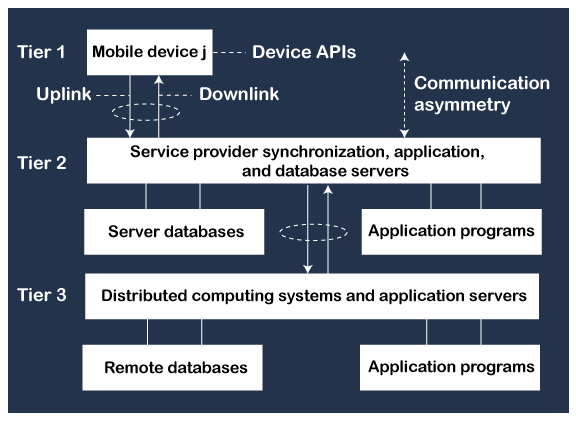Data DisseminationThe data dissemination is a method of distributing or transmitting the statistical or another type of data to the end-users. The data can be in the form of audio, video or any other data services. Organizations use many ways to release data to the public, such as electronic format, CD-ROM and paper publications, i.e., PDF files based on aggregated data. Mobile devices receive output data. A mobile device can select, tune and cache the required data items, which can be used for application programs. Nowadays, the most popular dissemination method is non-proprietary open systems using internet protocols. There are various communication infrastructures that can be used in data dissemination across any set of interconnected networks. Data is made available in standard open formats. Some organizations use proprietary databases to disseminate the data in order to protect the sovereignty and copyright of the data. If you use proprietary databases to disseminate the data, it requires specific software for end-users to view the data. This type of transmitted data cannot be open in common open formats. This type of data is first converted into the proprietary data format, and then the organization provides specifically designed software to their user to read the data. Data Dissemination formats and standardsAccording to the Special Data Dissemination Standard (SDDS), the data formats are divided into two categories: "hardcopy" and "electronic" publications: Examples of hardcopy publications Following is the list of some examples of Hardcopy publications:
Examples of electronic copy publications Following is the list of some examples of electronic copy publications:
Special Data Dissemination StandardStandards were developed to provide an internationally accepted statistical methodology for the dissemination of statistical data. The 'International Organization for Standardization' (ISO) is an international standard-setting body with many representatives from various national standards organizations. The Special Data Dissemination Standard (SDDS) is an International Monetary Fund standard established in April 1996 to guide member countries in disseminating national statistics to the public. Currently, there are 65 countries as a member of the Special Data Dissemination Standard (SDDS): These countries are:
Communications AsymmetryCommunication asymmetry is one of the key aspects of dissemination-based applications. The Communications Asymmetry specifies that the communication capacity or data volume going towards servers-to-clients (also known as downstream direction) is much greater than that in going towards clients-to servers (also known as upstream direction). Content delivery is always an asymmetric process. it doesn't matter whether it is performed over a symmetric channel such as the internet or over an asymmetric channel, such as a cable television (CATV) network. The mobile communication between a static computer system and a mobile device is intrinsically asymmetric. A device is always allocated a limited bandwidth because there are a large number of devices that have to access the network. The bandwidth in the downstream direction is much larger than in the upstream direction. It is because mobile devices have limited power resources. It is also a fact that faster data transmission rates for long intervals of time would use greater power dissipation from the devices. The data transmission rates go up to a maximum of 14.4 kbps for both uplink and downlink direction in GSM networks. It is an example of symmetric communication, and this symmetry is maintained because GSM is only used for voice communication. The below image shows the communication asymmetry in the uplink and downlink direction in a mobile network. 
Next TopicData Synchronization
|
 For Videos Join Our Youtube Channel: Join Now
For Videos Join Our Youtube Channel: Join Now
Feedback
- Send your Feedback to [email protected]
Help Others, Please Share










